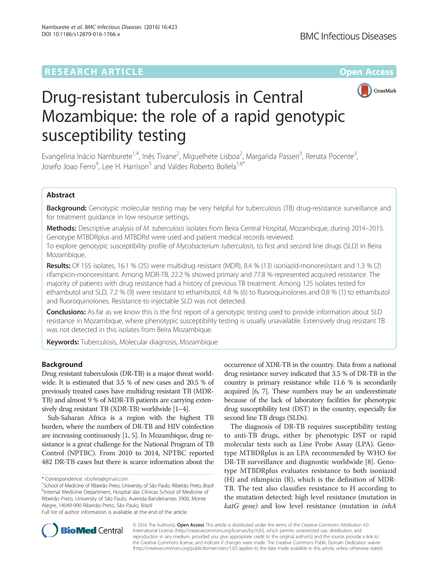Drug-resistant tuberculosis in Central Mozambique: the role of a rapid genotypic susceptibility testing
This study consists of a descriptive analysis of M. tuberculosis isolates from Beira Central Hospital, Mozambique, during 2014–2015, being the first report of a genotypic testing used to provide information about second line drug resistance in Mozambique.
BMC Infectious Diseases (2016) 16:423 DOI 10.1186/s12879-016-1766-x


